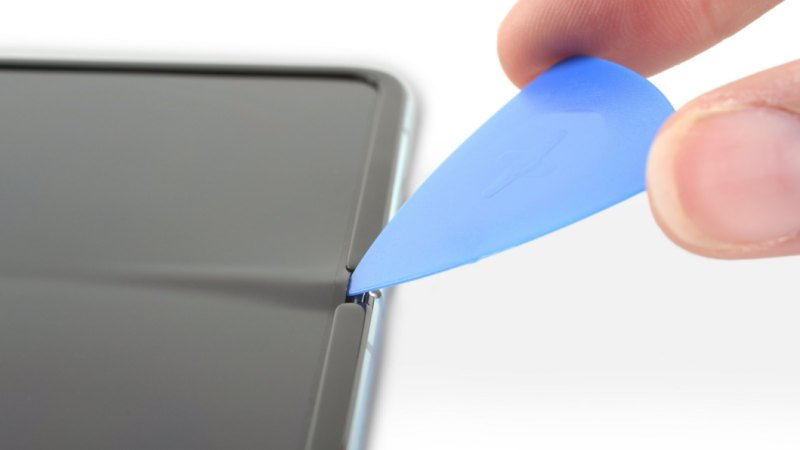7 lessons Apple learns from Samsung’s Galaxy Fold Fail

Can anyone else remember the Galaxy Note 7?
That release proved that sometimes being first out the gate with an idea isn’t the right way to approach mass market consumer electronics product manufacture – that’s because it’s so important to make sure that what you do ship can handle real world use…
Apple learns from Samsung’s Galaxy Fold Fail
This is certainly the lesson Samsung’s had to swallow with the botched introduction of its conceptually interesting but quite clearly not fully baked Galaxy Fold device, which it has had to delay (cancel?) after reviewers identified big problems in the product.
Fragile, prone to breakage in normal use, and simply not tough enough for the streets, Samsung had to swallow its pride and delay the release.
We know Apple is probably working on foldable iPhones, but, just as it did with its smartwatch, it is unlikely to ship anything until it is relatively certain that what it does ship is actually capable of handling normal use.
What lessons can Apple take from Samsung’s disaster?
1. Two iPhones aren’t better than one
Samsung’s Fold carried two huge batteries, one to power each side of the device.(It’s slightly less battery power than the new iPad mini, apparently). This means the system was effectively two mobile devices strapped together. How well did the Fold perform, given its graphics support had to effectively power two twinned systems? We’ll never know. The bottom line is that this design failed to find solutions to some of the biggest problems these products will have, such as how to consistently send power across a hinge — why else did it have a battery on each side of the device?
2. Sticking plaster isn’t good enough
One thing reviews noted was the existence of a plastic membrane across the twin screens of the Fold. Some thought this was a standard screen protector and removed the film from their device. It turned out it was an essential component. Thing is, in normal use, how often would this membrane be removed, or simply wear off while non tech-savvy users simply used the device? This sure sounds like a lo-fi solution to a high-tech problem. Not only this, but the significance of the layer wasn’t made clear.

c/o iFixIt
3. Blessings on the bezels
The briefly available iFixIt teardown (they took it off their site for reasons none will ever truly understand, but you’ll find it here) noted that the bezels around the displays were really thin – the problem was this left the sides of the display a little too accessible. They speculated that this was why small pieces of matter (allegedly) would slip under the screen of the device, causing it to bubble and distort.
The lesson here is pretty sure: just like Apple’s butterfly keyboard, there’s a point at which focusing on thinness generates unwanted structural weaknesses in the product. Focus on how things are really used, not how you think they should be used. “You’re holding it wrong” is not a winning argument. Nor is a bezel so lightly glued it may peel off over time.
4. Is OLED ready?
Samsung’s use of OLED displays was one of the ingredients that was meant to make the Fold so great, part smartphone and part tablet and with no annoying center line to demarcate the gap between the two halves of the device. However, iFixIt’s teardown confirmed that the edges of OLED screens can be quite delicate and if broken BAD THINGS can sneak into the display itself and generate problems. Which is what happened here. Samsung may have tried to mitigate this with its built-in screen protector, but perhaps a larger bezel would have been better? Or, perhaps, OLED displays need a little more development work?
5. What about the hinge?
A larger bezel isn’t easily possible around the hinges, and the Fold apparently had a large 7mm space around the hinge and display that left it prone to ingest debris, reviewers claimed. Things like this matter. Anyone making a device like this will know to avoid this kind of built in point of failure in future, particularly if a device is meant to be opened and closed regularly and designed to fit in your pocket. iFixit noted that the way the hinge worked left the spine exposed. You really don’t want too many moving parts in a device millions will use and take for granted. To be fair, it also pointed out how well engineered the hinge was.
Sigh. A little grain of something found its way beneath my Galaxy Fold display. Like the saying goes: "not surprised; just disappointed." Sending this back to Samsung hoping they figure out a way to seal up that hinge.
Silver lining: video tomorrow! pic.twitter.com/9UfYDMOEul
— Michael Fisher (@Captain2Phones) April 23, 2019
6. Humans are different
Everybody does things slightly differently. This extends to the folding phone. Some humans open left to right, others open right to left. Some always use the top back corner and pull back, others do the same thing but in reverse.
What I’m saying is that while the device was heavily tested in some ways — Samsung claimed its robots tested it 200,000 times, it seems to have failed once it hit the diversity of human-device interaction.
And here’s a man opening and closing a Fold 1,000 times. I think he felt older once he’d done…
7. How much memory?
Huge batteries and a huge 12GB of RAM were required to drive this device – almost as though Samsung wasn’t in control of the graphics capabilities of the operating system and was therefore unable to optimize the hardware/software combination.
Summing up
Samsung is going to have to make its Fold tougher and more capable of normal daily use. One thing it could do is extend the thin screen protector under the bezels, while another step could be to find a way to better protect the hinge when the device is closed.
[amazon_link asins=’0525537600′ template=’ProductCarousel’ store=’9to5ma-20′ marketplace=’US’ link_id=’a7ecf3b0-a975-4e97-ae70-6a9885f72fe6′]
All the same, if this fault-prone design proves to be one of the best currently available using current technology (and there’s no reason to think it isn’t, given Samsung makes so much of that technology), then I think we’ll be waiting for a folding iPhone for quite some time yet.
Apple still gets slammed for dropping the headphone jack, after all – shipping a smartphone even tech reviewers can’t help but break would not be good for its brand. The butterfly effect was bad, but this one is much worse.
Samsung will learn these lessons too, of course, so don’t be too surprised to see it return to the frame with a folding device at some point.
Now see what iFixIt said.
Please follow me on Twitter, or join me in the AppleHolic’s bar & grill and Apple Discussions groups on MeWe.




